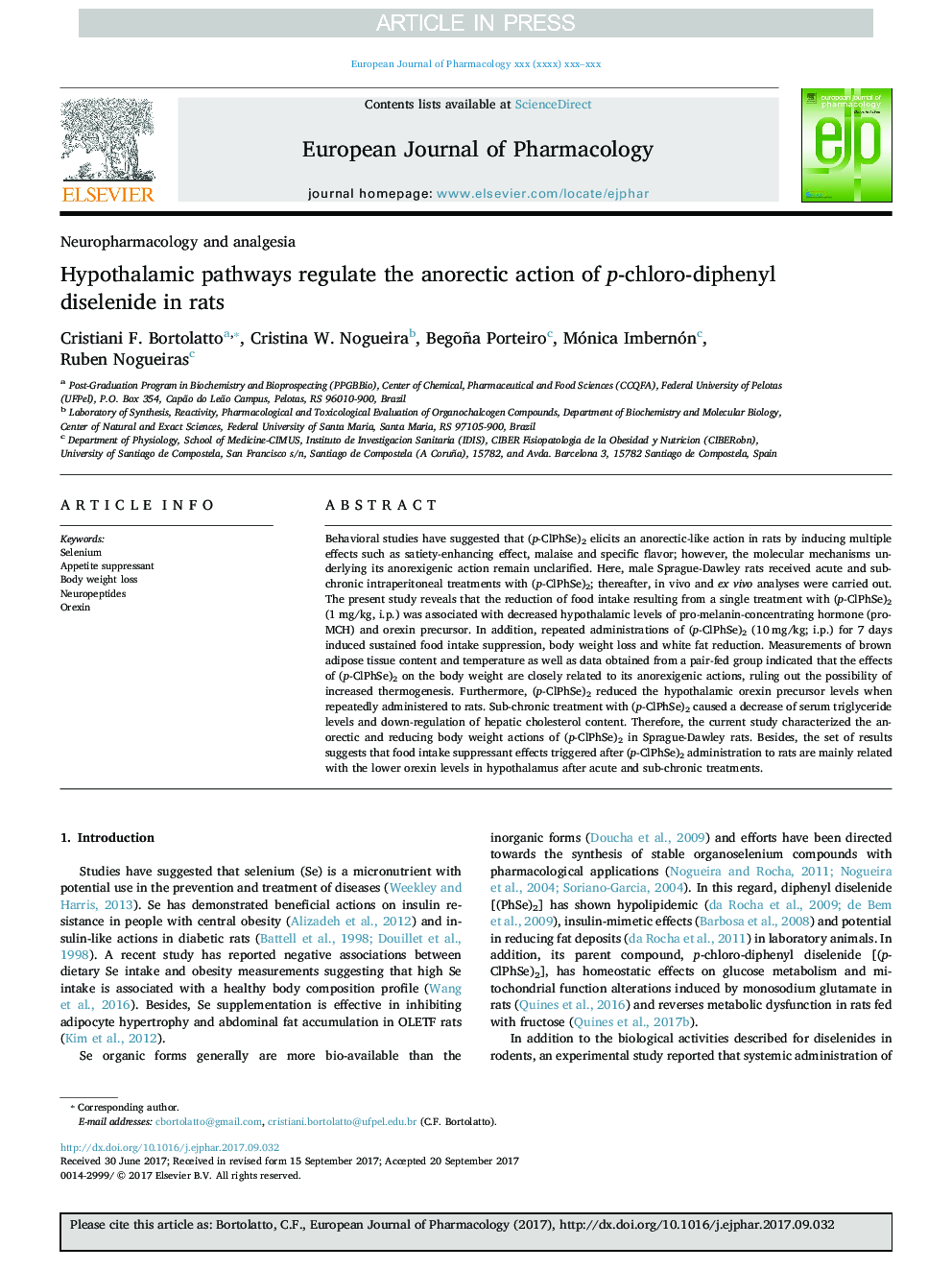| Article ID | Journal | Published Year | Pages | File Type |
|---|---|---|---|---|
| 8529986 | European Journal of Pharmacology | 2017 | 10 Pages |
Abstract
Behavioral studies have suggested that (p-ClPhSe)2 elicits an anorectic-like action in rats by inducing multiple effects such as satiety-enhancing effect, malaise and specific flavor; however, the molecular mechanisms underlying its anorexigenic action remain unclarified. Here, male Sprague-Dawley rats received acute and sub-chronic intraperitoneal treatments with (p-ClPhSe)2; thereafter, in vivo and ex vivo analyses were carried out. The present study reveals that the reduction of food intake resulting from a single treatment with (p-ClPhSe)2 (1Â mg/kg, i.p.) was associated with decreased hypothalamic levels of pro-melanin-concentrating hormone (pro-MCH) and orexin precursor. In addition, repeated administrations of (p-ClPhSe)2 (10Â mg/kg; i.p.) for 7 days induced sustained food intake suppression, body weight loss and white fat reduction. Measurements of brown adipose tissue content and temperature as well as data obtained from a pair-fed group indicated that the effects of (p-ClPhSe)2 on the body weight are closely related to its anorexigenic actions, ruling out the possibility of increased thermogenesis. Furthermore, (p-ClPhSe)2 reduced the hypothalamic orexin precursor levels when repeatedly administered to rats. Sub-chronic treatment with (p-ClPhSe)2 caused a decrease of serum triglyceride levels and down-regulation of hepatic cholesterol content. Therefore, the current study characterized the anorectic and reducing body weight actions of (p-ClPhSe)2 in Sprague-Dawley rats. Besides, the set of results suggests that food intake suppressant effects triggered after (p-ClPhSe)2 administration to rats are mainly related with the lower orexin levels in hypothalamus after acute and sub-chronic treatments.
Related Topics
Life Sciences
Neuroscience
Cellular and Molecular Neuroscience
Authors
Cristiani F. Bortolatto, Cristina W. Nogueira, Begoña Porteiro, Mónica Imbernón, Ruben Nogueiras,
